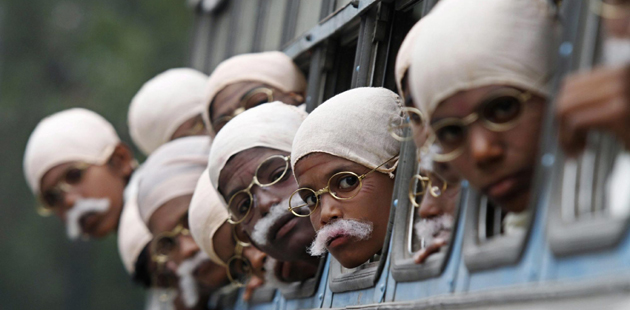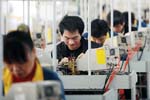Uptick in official PMI 'signals stabilization'
Updated: 2012-02-02 07:49
By Chen Jia and Wang Ying (China Daily)
|
|||||||||||
|
 A worker attending to a yarn machine at a factory in Yiwu, Zhejiang province. A sub-index of China's new export orders dropped to 46.9 in January from 48.6 in December. [Photo / China Daily] |
HSBC survey paints picture of continued stress among certain enterprises
BEIJING/SHANGHAI - China's manufacturing sector expanded in January, as indicated by a slight rise in the Purchasing Managers' Index (PMI) to 50.5 from 50.3 in December.
The rise was a signal that the pace of economic moderation was stabilizing, analysts said, and further easing policies might soon be announced.
The official PMI, which was jointly released by the National Bureau of Statistics (NBS) and the China Federation of Logistics & Purchasing (CFLP) for the first time on Wednesday, unexpectedly exceeded the consensus forecast of 48.
The uptick in the PMI was mainly supported by growth in new orders and manufacturing output.
The PMI is a preliminary reading on the nation's manufacturing activity, with 50 demarcating expansion from contraction.
The sub-index of new orders rose to a three-month high of 50.4 in January from a contractionary reading of 49.8 in December.
The increase might reflect consumer spending for the Lunar New Year holiday, which began on Jan 23, said a report on the CFLP's website.
Despite the improvement in factory output, the index for export orders last month dropped to 46.9 from 48.6 in December, undermined by the situation in Europe, which is struggling with a sovereign debt crisis.
"External shocks may bring more threats in the coming months," although China's economic deceleration was likely to stabilize, said Zhang Liqun, a researcher with the Development Research Center of the State Council.
Ding Mingquan, who runs a swimsuit factory in Jinjiang of East China's Fujian province, said that his new export orders from Europe and the United States for the first half had fallen about 15 percent year-on-year.
"Only by improving production capacity and creating new products can we withstand shocks in the future," said Ding.








